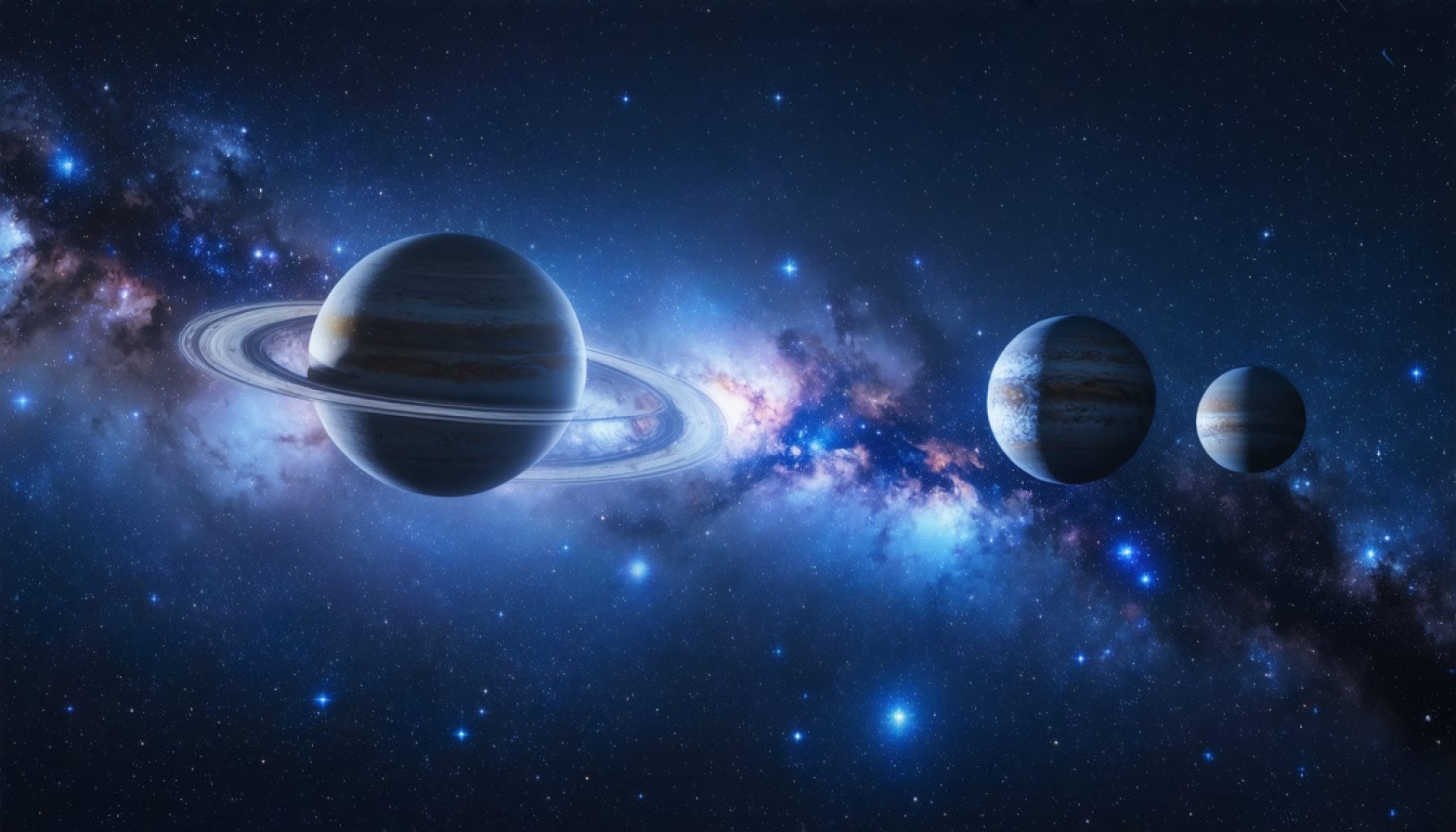- April transforms the night sky into a celestial performance, featuring planets, meteors, and star clusters.
- Venus shifts from an evening star to a morning spectacle, shining brightly in the eastern sky.
- Jupiter remains visible in the western twilight, paired with the crescent moon at both the beginning and end of April.
- Mars commands the night sky, located between stars Procyon and Pollux.
- The Lyrid meteor shower peaks April 21-22, offering skywatchers in the Northern Hemisphere a display of about 15 meteors per hour.
- The ancient star cluster M3, 34,000 light-years away, can be observed through binoculars or a telescope for enhanced detail.
- This April, let the dance of celestial objects remind us of our universal bond and inspire wonder.
April skies transform into a celestial stage, orchestrating a dazzling ballet of planetary glides and stellar displays. Against the velvety canvas of night, planets weave a spell, meteors paint ephemeral streaks, and an ancient city of stars beckons.
This month, the morning and evening skies are adorned with planetary gems—Jupiter, Venus, and Mars—each showcasing unique celestial choreography. Venus, once a dazzling evening star, now graces the early morning horizon. Watch as it rises with regal brilliance, illuminating the eastern sky before dawn. Meanwhile, Jupiter lingers in the western twilight, a steadfast guardian of the night, paired with the ethereal crescent moon on both the first and last of April’s evenings. Mars, the fiery red warrior, commands attention high in the night, forging a path between the bright stars Procyon and Pollux.
As the nights deepen, the Lyrid meteor shower offers a moment of cosmic wonder. Peaking from April 21-22, the Lyrids invite skywatchers to gaze upward as fiery trails light up the heavens. Though a modest shower, with a rate of about 15 meteors per hour, it promises graceful arcs across the sky, best viewed after midnight from the Northern Hemisphere. Lie back, focus your gaze overhead, and let the shooting stars dissolve the barrier between Earth and the vast cosmos.
In this same celestial concert, the ancient globular cluster M3 emerges, a distant beacon 34,000 light-years away. This “city of stars” boasts a luminescent sphere of over half a million stars, a relic from when the universe was young. Through binoculars, it appears as a solitary, ethereal glow. But with each increment in telescope power, M3 unveils its shimmering charm—a tight-knit community of stars clasped in a cosmic embrace.
This April, celebrate the universe. Let these skyborne marvels remind us of our shared heritage under the stars. As we look upward, may the endless dance of planets and meteors inspire wonder, linking the simple act of skywatching to the grand tapestry of the universe. Embrace the cosmic ballet, for it is an invitation to pause and marvel at the grand dance of creation.
Unlock the Mysteries of April’s Celestial Dance: Planetary Marvels and Meteor Showers
April’s night sky is a celestial masterpiece, filled with opportunities for novice and seasoned astronomers alike. Here’s a closer look at facts, viewing tips, and expert insights to enhance your stargazing experience.
How to Spot Planets like a Pro
– Venus as a Morning Star: Venus transitions from an evening to a morning star, offering a short window to be observed at dawn. Look for the brightest object near the horizon in the eastern sky just before sunrise.
– Jupiter and the Crescent Moon: On April 1st and 30th, observe the crescent moon pairing with Jupiter, offering a stunning spectacle. This conjunction is best viewed just after sunset in the western sky.
– Mars’ Journey: Easily identified by its reddish hue, Mars is high in the sky. Use the bright stars Procyon and Pollux as guides to locate this planet.
Life Hacks for Meteor Shower Viewing
– Lyrid Meteor Shower Tips: The Lyrid meteor shower peaks on April 21-22. For optimum viewing, find a dark location away from city lights and allow 20 minutes for your eyes to adjust to the dark. Bring a blanket for comfort, lie back, and gaze overhead ideally after midnight.
Stargazing Equipment and Tips
– For Beginners: A pair of binoculars can enhance your view of all celestial events. To upgrade the experience, a basic telescope will reveal more details in the lunar surface and bright planets.
– Advanced Astronomers: A larger telescope can unveil the cosmic tapestry of the M3 globular cluster, with its dense population of stars coming into focus.
Industry Trends and Insights
– Astrophotography Boom: There’s a rising interest in astrophotography, with many amateur astronomers capturing stunning images of the night sky. Investing in a camera with manual settings can allow you to capture the cosmic dance.
– Space Tourism Interest: As interest in the night sky grows, space tourism companies like Virgin Galactic are exploring commercial flights to give people a firsthand look at space, fueling curiosity and inspiration.
Pros and Cons Overview
– Pros:
– Free entertainment and education directly from your backyard.
– Accessible to everyone with minimal equipment.
– Can be a peaceful and reflective experience connecting us with the universe.
– Cons:
– Weather dependence; cloud cover can obstruct viewing.
– Light pollution in urban areas can impede visibility.
– Requires staying awake late or waking very early.
Actionable Recommendations
1. Plan your stargazing session around favorable weather conditions and set a reminder for peak meteor shower dates.
2. Gather equipment: binoculars, telescope, and a camera with a tripod for the best experience.
3. Join astronomy clubs or participate in online communities to share tips and experiences (if you’re seeking camaraderie or more expertise).
Conclusion
Celebrating April’s celestial displays offers not just visual delights but deepens our connection with the universe. Set aside some time this month to watch the grand ballet of planets, meteors, and stars unfold. You’ll find it an enlightening escape from the hustle and bustle of Earthly concerns.
For more information on astronomy and engaging with the night sky, explore reputable sites such as Nasa and Sky & Telescope.









